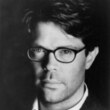Back to Blood: A Novel
(Libby/OverDrive eAudiobook)
Available Platforms
Description
More Details
Also in this Series
Published Reviews
Booklist Review
*Starred Review* After skewering academia in I Am Charlotte Simmons (2004), Wolfe, the impish, white-suited satirist, eviscerates a city-in-flux as he did with New York in The Bonfire of the Vanities (1987) and Atlanta in A Man in Full (1998). This time he takes on Miami, which, as one character declares, is not America. Wolfe's pizzazz and obsessions are on peacock display, from slapstick action to ironic stereotypes to photorealist settings, including smugly trendy restaurants, a gated island, the bawdy Biscayne Bay regatta, and the prestigious annual exhibition, Art Basel Miami. The king and queen in his chess-set cast of characters are two young Cuban Americans determined to ascend above the modest homes and rigid mindsets of their Little Havana neighborhood. Freakishly muscular Nestor is a sweet-natured cop who earns combustible notoriety when he daringly rescues an illegal Cuban immigrant from atop a ship's mast. Beautiful Magdalena is a nurse working for an Anglo psychiatrist who treats wealthy patients addicted to pornography. Also on the board are a sly, Waspy reporter; a suspect Russian art collector; and a lovely Haitian college student. Within a masterfully strategized plot, Wolfe works his sardonic mojo to mock both prejudice and decadence and demolish the art world, reality TV, tawdry fame, and journalism in the digital age. Though plagued with belabored sex scenes, this is a shrewd, riling, and exciting tale of a volatile, divisive, sun-seared city where everybody hates everybody. HIGH-DEMAND BACKSTORY: Anticipation has been high for several years now, so the publisher will crank up the publicity for what can legitimately be dubbed a cultural event.--Seaman, Donna Copyright 2010 Booklist
Publisher's Weekly Review
Two hundred pages into Wolfe's frantic potboiler about Miami's melting pot, a description of City Hall reminds readers of the vivid detail that made Wolfe (The Bonfire of the Vanities) a literary icon. Yet despite flashes of "the right stuff", his latest novel comprises not an expose of popular culture so much as a lurid compendium of cliches. The prologue features a scandal-fearing newspaper editor fretting as his wife tries to park her mini-hybrid at a trendy restaurant, but the action begins with marine patrolman Nestor Camacho speeding across Biscayne Bay. Unfortunately, his moment of glory dissolves into humiliation when he is condemned for arresting, after saving, a Cuban refugee. Resolute in pressing on, a bewildered Nestor works with reporter John Smith to unravel fraud at the city's new art museum and uncover the truth behind an incident of school violence. In the process, he meets elegant Haitian beauty Ghislaine, whose professor father desperately hopes she'll "pass" for white. African Americans, Russian emigres, and Jewish retirees also appear: ethnic groups separated by language, tribe, and class; linked together by sex, money, and real estate. Filling his prose with sound effects, foreign phrases, accented English, and slang, Wolfe creates his own Miami sound machine-noisy, chaotic, infused with tropical rhythms, and fueled by the American dream. The result is a book louder than it is deep; more sensational than it is thought provoking; less like Wolfe at his best, more like tabloid headlines recast as fiction. (Oct. 23) © Copyright PWxyz, LLC. All rights reserved.
Kirkus Book Review
Wolfe (A Man in Full, 1998, etc.) returns to fine form with this zingy, mile-a-minute novel of life in the weird confines of Miami. As if the 45 years from Electric Kool-Aid Acid Test to here hadn't passed, Wolfe is back to some old tricks, including an ever-shifting, sometimes untrustworthy point of view, dizzying pans from one actor to another and rat-a-tat prose. Some of his post-yuppie characters might have been extras from Bonfire of the Vanities, while the hero of the piece has the endless self-regard of Gordo Cooper in The Right Stuff--but no matter where they figure on the social ladder or tax bracketing scheme, they're mystified by one another. The tale opens with Mac the Knife, a 40-something fleshpot behind the wheel of a hybrid car who, scarcely a dozen pages in, falls afoul of a tough Cubana: "Far from shrinking under Mac's attack, the beautiful rude bitch came two steps closerand said, in English without raising her voice, Why you speet when you talk?' " Cuban and Anglo, Russian and Jew, rich and poor: All of Miami is a meeting place that very often turns into a battleground, over the carnage of which ranges Wolfe's nominal hero, a waterborne cop named Nestor Camacho, who has his work cut out for him. That's especially true when he tries to blend in with the beach bimbettes here and the retired New Yorkers there, and though he tries (for, as Wolfe astutely observes, "Walking nonchalantly in a crouch--it couldn't be done"), he always cuts a fine and heroic figure. Wolfe's book goes on long, but never too long, and though he often strays into ethnic-clash territory staked out by John Sayles, he makes Miami his own as a kind of laboratory of future possibilities, some dystopian and some not, all ripe for lampooning. Full of stereotyping and waspishness, sure, but a welcome pleasure from an old master and the best from his pen in a long while.]] Copyright Kirkus Reviews, used with permission.
Booklist Reviews
*Starred Review* After skewering academia in I Am Charlotte Simmons (2004), Wolfe, the impish, white-suited satirist, eviscerates a city-in-flux as he did with New York in The Bonfire of the Vanities (1987) and Atlanta in A Man in Full (1998). This time he takes on Miami, which, as one character declares, is not America. Wolfe's pizzazz and obsessions are on peacock display, from slapstick action to ironic stereotypes to photorealist settings, including smugly trendy restaurants, a gated island, the bawdy Biscayne Bay regatta, and the prestigious annual exhibition, Art Basel Miami. The king and queen in his chess-set cast of characters are two young Cuban Americans determined to ascend above the modest homes and rigid mindsets of their "Little Havana" neighborhood. Freakishly muscular Nestor is a sweet-natured cop who earns combustible notoriety when he daringly rescues an illegal Cuban immigrant from atop a ship's mast. Beautiful Magdalena is a nurse working for an Anglo psychiatrist who treats wealthy patients addicted to pornography. Also on the board are a sly, Waspy reporter; a suspect Russian art collector; and a lovely Haitian college student. Within a masterfully strategized plot, Wolfe works his sardonic mojo to mock both prejudice and decadence and demolish the art world, reality TV, tawdry fame, and journalism in the digital age. Though plagued with belabored sex scenes, this is a shrewd, riling, and exciting tale of a volatile, divisive, sun-seared city where "everybody hates everybody." HIGH-DEMAND BACKSTORY: Anticipation has been high for several years now, so the publisher will crank up the publicity for what can legitimately be dubbed a cultural event. Copyright 2012 Booklist Reviews.
Library Journal Reviews
About every eight to ten years since the 1987 publication of Bonfire of the Vanities, Wolfe writes a novel summing up America's zeitgeist. This wide-lens view of Miami's Biscayne Bay sounds no different. Here we meet the Cuban mayor and black police chief, the ambitious young journalist (a Wolfe in character's clothing?), a light-skinned Creole from Haiti (whose darker brother preens like a gangster), the billionaire porn addict and the artists at the Miami Arts Basel Fair, the spectators at the regatta and the former New Yorkers at an "Active Adult" condo—not to mention some suspicious-looking Russians. What are they up to? You must read this book to find out.
[Page 56]. (c) Copyright 2012. Library Journals LLC, a wholly owned subsidiary of Media Source, Inc. No redistribution permitted.Publishers Weekly Reviews
Two hundred pages into Wolfe's frantic potboiler about Miami's melting pot, a description of City Hall reminds readers of the vivid detail that made Wolfe (The Bonfire of the Vanities) a literary icon. Yet despite flashes of "the right stuff", his latest novel comprises not an exposé of popular culture so much as a lurid compendium of clichés. The prologue features a scandal-fearing newspaper editor fretting as his wife tries to park her mini-hybrid at a trendy restaurant, but the action begins with marine patrolman Nestor Camacho speeding across Biscayne Bay. Unfortunately, his moment of glory dissolves into humiliation when he is condemned for arresting, after saving, a Cuban refugee. Resolute in pressing on, a bewildered Nestor works with reporter John Smith to unravel fraud at the city's new art museum and uncover the truth behind an incident of school violence. In the process, he meets elegant Haitian beauty Ghislaine, whose professor father desperately hopes she'll "pass" for white. African Americans, Russian émigrés, and Jewish retirees also appear: ethnic groups separated by language, tribe, and class; linked together by sex, money, and real estate. Filling his prose with sound effects, foreign phrases, accented English, and slang, Wolfe creates his own Miami sound machine—noisy, chaotic, infused with tropical rhythms, and fueled by the American dream. The result is a book louder than it is deep; more sensational than it is thought provoking; less like Wolfe at his best, more like tabloid headlines recast as fiction. (Oct. 23)
[Page ]. Copyright 2012 PWxyz LLCPW Annex Reviews
Two hundred pages into Wolfe's frantic potboiler about Miami's melting pot, a description of City Hall reminds readers of the vivid detail that made Wolfe (The Bonfire of the Vanities) a literary icon. Yet despite flashes of "the right stuff", his latest novel comprises not an exposé of popular culture so much as a lurid compendium of clichés. The prologue features a scandal-fearing newspaper editor fretting as his wife tries to park her mini-hybrid at a trendy restaurant, but the action begins with marine patrolman Nestor Camacho speeding across Biscayne Bay. Unfortunately, his moment of glory dissolves into humiliation when he is condemned for arresting, after saving, a Cuban refugee. Resolute in pressing on, a bewildered Nestor works with reporter John Smith to unravel fraud at the city's new art museum and uncover the truth behind an incident of school violence. In the process, he meets elegant Haitian beauty Ghislaine, whose professor father desperately hopes she'll "pass" for white. African Americans, Russian émigrés, and Jewish retirees also appear: ethnic groups separated by language, tribe, and class; linked together by sex, money, and real estate. Filling his prose with sound effects, foreign phrases, accented English, and slang, Wolfe creates his own Miami sound machine—noisy, chaotic, infused with tropical rhythms, and fueled by the American dream. The result is a book louder than it is deep; more sensational than it is thought provoking; less like Wolfe at his best, more like tabloid headlines recast as fiction. (Oct. 23)
[Page ]. Copyright 2012 PWxyz LLCReviews from GoodReads
Citations
Wolfe, T., & Phillips, L. D. (2012). Back to Blood: A Novel (Unabridged). Hachette Audio.
Chicago / Turabian - Author Date Citation, 17th Edition (style guide)Wolfe, Tom and Lou Diamond Phillips. 2012. Back to Blood: A Novel. Hachette Audio.
Chicago / Turabian - Humanities (Notes and Bibliography) Citation, 17th Edition (style guide)Wolfe, Tom and Lou Diamond Phillips. Back to Blood: A Novel Hachette Audio, 2012.
Harvard Citation (style guide)Wolfe, T. and Phillips, L. D. (2012). Back to blood: a novel. Unabridged Hachette Audio.
MLA Citation, 9th Edition (style guide)Wolfe, Tom, and Lou Diamond Phillips. Back to Blood: A Novel Unabridged, Hachette Audio, 2012.
Copy Details
| Collection | Owned | Available | Number of Holds |
|---|---|---|---|
| Libby | 1 | 1 | 0 |

































